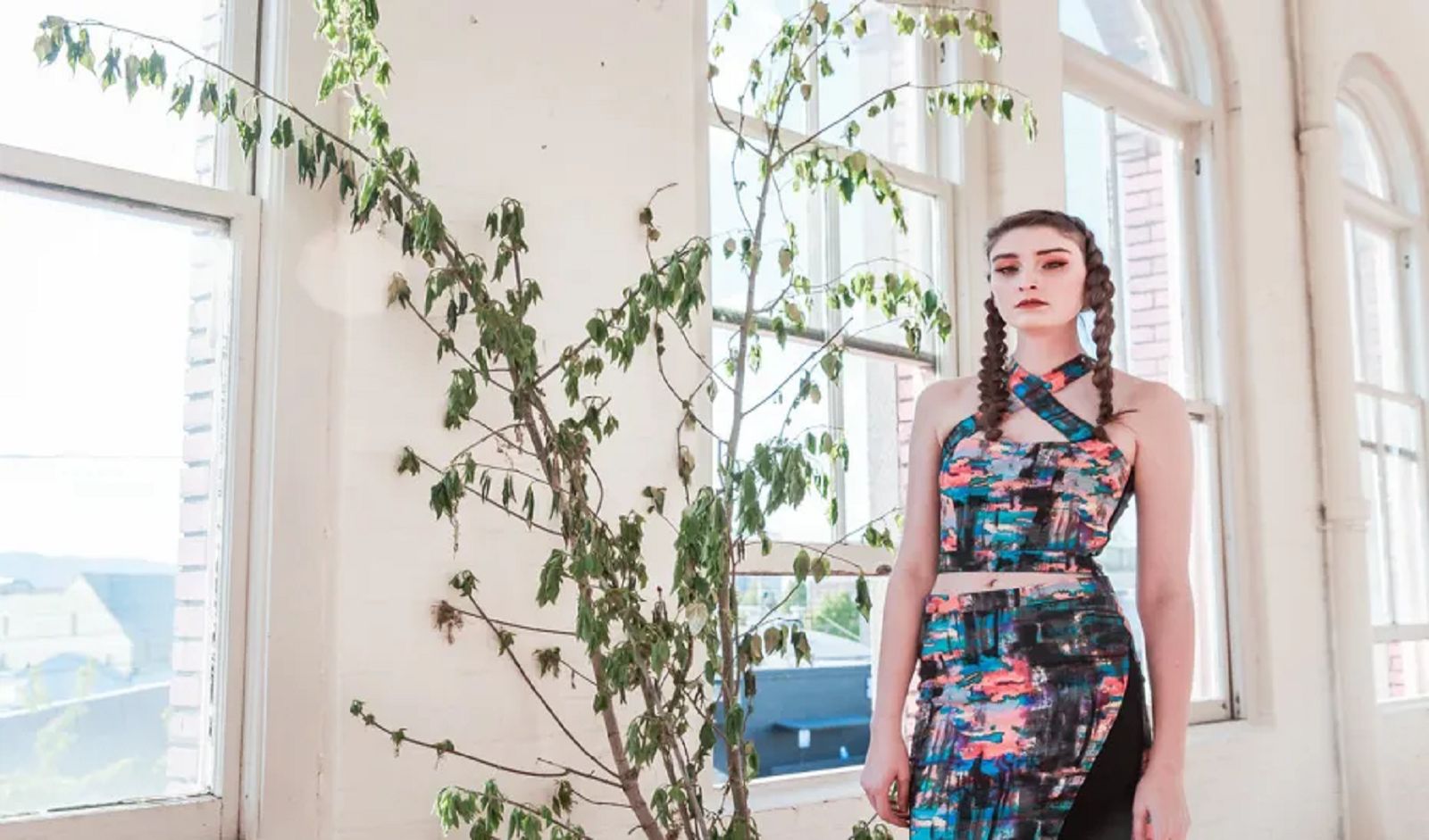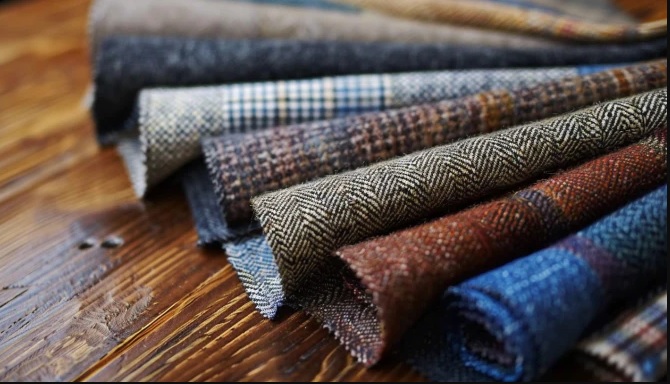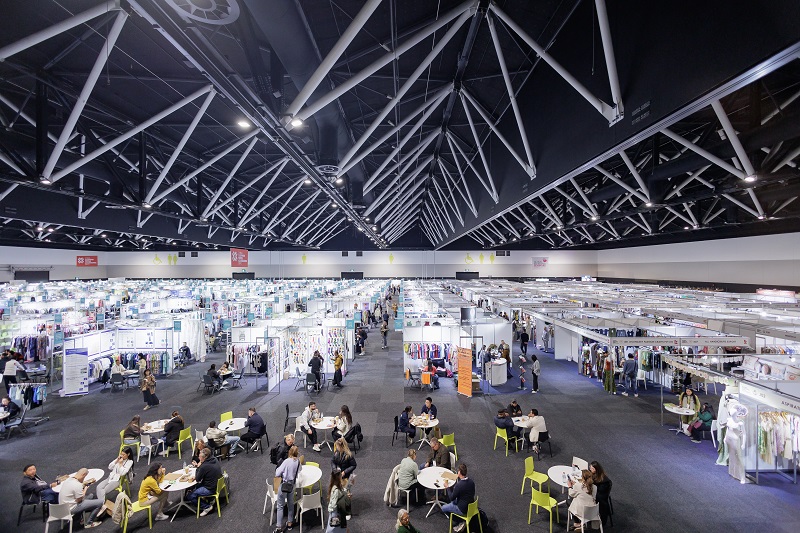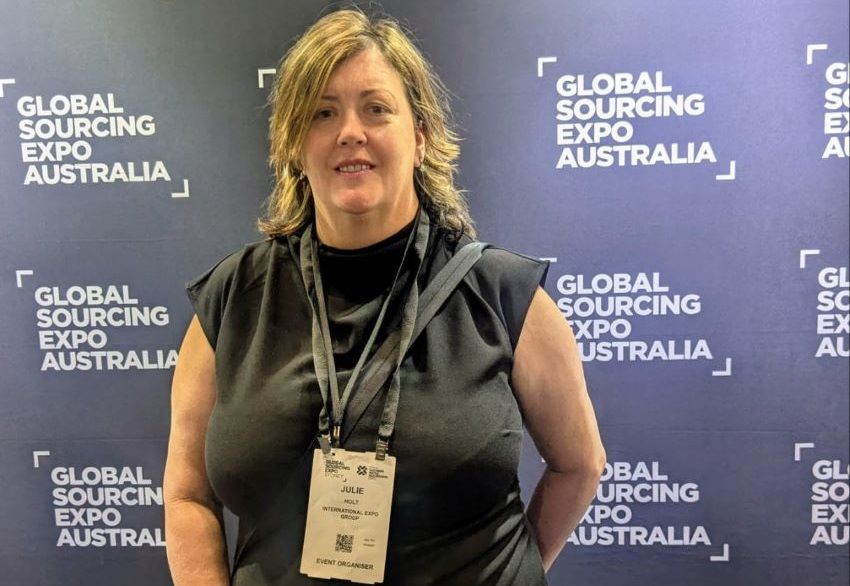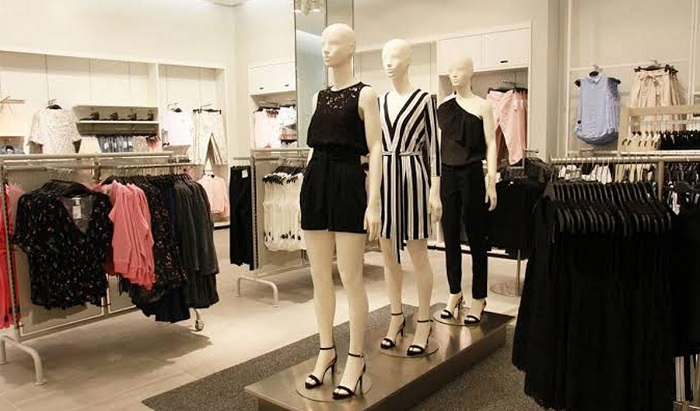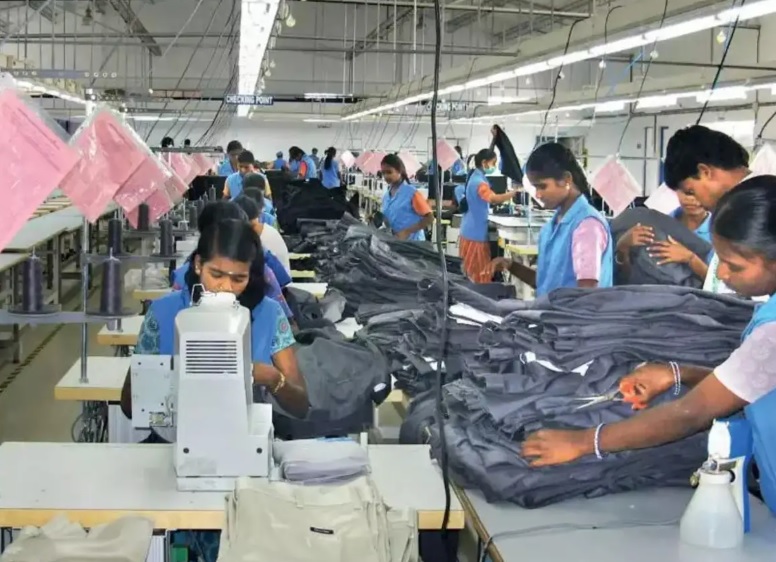FW
Crystal International Group Limited’s denim division, Crystal Denim, has unveiled CirClimate, a groundbreaking denim collection engineered for climate adaptability and full biodegradability. Developed in partnership with Advance Denim, the capsule uses Eastman Naia Acetate Renew and Tencel fibres merging environmental responsibility with high-performance functionality.
The CirClimate collection is entirely biodegradable and built on the ‘Design to Disappear’ philosophy. It incorporates 100 per cent cellulosic fibres, cotton threads, compostable packaging, and removable shank buttons, eliminating synthetic elements like polyester to reduce environmental impact. Unlike conventional performance denim, CirClimate offers all-season comfort without compromising on sustainability.
The key material, Naia Acetate Renew, is derived from sustainably sourced wood pulp and recycled content, offering a soft, breathable, and durable fabric. Unlike traditional performance denim, CirClimate is free from polyester, yet it delivers year-round comfort through temperature regulation and moisture-wicking capabilities.
“Our aim is to introduce more nature-based, eco-friendly collections to the industry,” said Janet Lui, Senior Manager - Product Development at Crystal Denim. “We are redefining denim to integrate climate-adaptive design and sustainability performance. CirClimate has passed rigorous moisture-wicking and temperature-regulating tests.”
Based in Hong Kong, Crystal International is reinforcing its commitment to circularity and resilient fashion solutions amid rising environmental challenges and shifting consumer values. The launch of CirClimate aligns with the Group’s Net Zero 2050 roadmap, underscoring its vision to lead the industry toward regenerative and climate-conscious fashion innovation.
Posting a strong performance driven by the robust demand for the brand’s updated apparel collection, Abercrombie & Fitch reported net sales of $1.10 billion in Q1, FY25.
The retailer's strategy of introducing trendy pieces, such as printed jeans and dresses, successfully attracted more shoppers, especially younger consumers. Hollister's vintage tees and denim lines performed well, with comparable sales increasing 23 per cent during the quarter—up from 13 percent in the same period last year.
Despite tariffs and global trade challenges that create demand fluctuations, these factors have prompted a revision to its profit forecast for annual sales, Abercrombie stated. The company now anticipates net sales to grow approximately 3 to 6 per cent for the year, an increase from its earlier forecast of 3 to 5 per cent growth. This updated outlook includes a 30 per cent duty on imports from China and a 10 per cent tariff on other global goods, with tariff-related expenses estimated at $50 million.
Abercrombie's focus on stylish, high-quality apparel and its ability to respond to changing market trends are accelerating consumer engagement. As it navigates the impact of tariffs and evolving demand patterns, the brand continues to strengthen its position in the competitive retail landscape.
A global leader in sustainable chemicals, Indorama Ventures is expanding its deja fiber and filament yarn portfolio to significantly boost sustainability efforts. This move aims to drive circularity and decarbonization within the global textile industry and prepare for the upcoming European Ecodesign for Sustainable Products Regulation (ESPR).
The expanded deja portfolio features three key offerings designed to tackle customers' primary sustainability challenges:
Indorama Ventures offers deja PET fibers and filament yarns made entirely from recycled textile waste that was previously discarded. These on-demand products include high-tenacity yarns and cords for technical uses like airbags and seat belts, as well as fibers and filament yarns for lifestyle applications such as apparel and home textiles.
To help customers lower their carbon footprint, deja Bio provides high-performing deja PET yarns produced in Europe and Asia with a significantly reduced carbon footprint. Thanks to Indorama Ventures' fully integrated, in-house PET supply chain, all these products comply with the ‘Together for Sustainability’ industry initiative's accounting methodology.
The bio-based deja portfolio offers high-tenacity yarns and tire cord fabrics that allow for a gradual introduction of bio-content into customer products. Customers can avoid or simplify qualification procedures and still get the same performance as fossil-based solutions. Plus, these products can be recycled through mechanical or enhanced processes.
deja Enhanced products are designed to transform hard-to-recycle packaging and textile waste into new fibers and yarns through enhanced recycling, developed in close collaboration with partners across the value chain. These solutions are readily available and perform similarly to fossil-based alternatives. In the future, these products will also be supplied with flexible proportions of reprocessed textile feedstock to meet customers' circularity goals.
Claire Mattelet, Head-Global Sustainability Program, Indorama Ventures-Fibers Business, states, with the expanded deja portfolio, Indorama Ventures empowers its customers to meet their circularity and decarbonization goals through innovative, high-performance PET fibers and yarns made from textile waste, bio-based inputs, and hard-to-recycle materials.
Taking a leading role and collaborating throughout the entire value chain to drive sustainable practices in the man-made fibers industry is central to Indorama Ventures’ commitment to shaping the future of textiles.The company has set a target of achieving 40 per cent recycled and bio-based feedstock for its current commodity feedstock by 2030.
Nigeria imports nearly 90 per cent of its ‘Ankara’ print fabrics from China and India, as per a new report titled, ‘Who is Dressing 220 + Million Nigerians?’ by Consonance Investment.
Ankara is frequently used as Aso-Ebi, a Yoruba term meaning ‘family cloth,’ during events like weddings, funerals, and birthdays to demonstrate solidarity.
However, despite being a cultural staple and Nigerians spending between ₦36,000 and over ₦20 million on fashion annually, the country continues to rely on imported Ankara fabrics resulting in an estimated $3 billion loss in local value each year.
Local fashion brands and textile manufacturers account for less than 15 per cent of the clothing supply, largely due to inadequate investment in domestic production and retail infrastructure, adding that the value chain remains foreign-dependent, the report further noted.
Nigerian consumers spend between $2.5 billion and $6 billion on clothes every year. However, the fashion industry only makes up $129 million (₦205 billion) of the country’s GDP, or 0.47 per cent of the total, says the report. Most of this value is lost to imports and informal retail activity.
Nigeria imports up to $6 billion in apparel and textiles each year, excluding an estimated $1.2 billion in smuggled goods, while exports remain under $100 million, the report claims. Despite strong domestic demand and cultural influence, the industry remains fragmented, underfunded, and full of untapped potential, it adds.
The report also notes that ‘approximately 25,000 individuals are directly employed in Aba’s garment and leather clusters, with many more engaged in supporting industries.’
According to the report, at least 10,000 Nigerian fashion vendors operate on Instagram, powering a massive informal e-commerce scene.
The report states, less than 15 per cent of Nigeria’s fashion market is served by structured capital from banks and government agencies, with the majority of fashion brands in the country being self-funded.
Union Agriculture Minister Shivraj Singh Chouhan has assured the Maharashtra Government full federal support in its endeavor to develop a cotton plucking machine He also directed the Agriculture Ministry's mechanization division to launch a similar initiative, underscoring the government's dedication to advancing farm mechanization.
Speaking during the launch of the Centre’s ‘One Nation-One Agriculture-One Team’ program, an effort to improve coordination among agricultural stakeholders, Chauhan emphasized the machine would help revolutionize cotton harvesting in India, where the process is still very labor-intensive.
Manikrao Kokate, Agriculture Minister, Maharashtra emphasized, labor shortages are a significant hurdle for the sector, reinforcing the urgent need for mechanization. Chouhan agreed, advocating for a broader push toward farm mechanization to boost productivity and ease the burden on farmers.
Beyond mechanization, the minister underscored the vital role of soil health in shaping sustainable cropping patterns. He urged farmers to adopt practices that boost soil fertility, including crop diversification, which can help maintain long-term land productivity.
Chouhan also recommended a balanced approach to natural farming, advising farmers to start small and gradually expand rather than attempting an immediate, full-scale transition. He noted that when done correctly, natural farming doesn't necessarily reduce input levels, but warned that some farmers' improper practices have led to less-than-ideal results.
The ‘One Nation-One Agriculture-One Team’ initiative aims to foster seamless collaboration among government bodies, agricultural scientists, input suppliers, and farmers to collectively tackle the sector's challenges and enhance overall productivity.
The Pakistan Readymade Garments Manufacturers and Exporters Association (PRGMEA) has opposed imposition of 18 per cent sales tax on exporters operating under the Export Facilitation Scheme (EFS). Such a regressive tax would cripple the garment export sector, stifle crucial cash flow, and undermine Pakistan's ability to expand its presence in the global apparel market, the association warned.
Dr Ayyazuddin, Regional Chairman, PRGMEA, stated, more than luxury, EFS is a necessity for export-led growth. Being entirely export-oriented and at the tail end of the textile value chain, the garment industry is already suffering from delayed refunds and multiple taxes, he added.
Exporters pay sales tax upfront and wait for months to receive refunds; they often face a three-month delay, which severely hampers their cash flow and operational capacity, Ayyazuddin explained.
He emphasized, imposing additional taxes would be disastrous, especially since the garment industry plays a critical role as Pakistan's largest source of employment and foreign exchange, particularly at a time when global trade shifts are creating new opportunities.
Any restrictions or levies on imported inputs, which are essential given that 79 per cent of the global textile market uses synthetic filament yarn, would prompt international buyers to redirect orders to Pakistan's competitors like Bangladesh, Vietnam, or Cambodia, he warned.
Meanwhile, the Pakistan Hosiery Manufacturers Association (PHMA) is urging the government to scrap the outdated peak and off-peak electricity tariff structure.
In a letter sent to top government officials, the PHMA highlighted that the peak-hour surcharge policy was introduced to curb consumption during severe power shortages. However, the energy landscape has significantly changed, with Pakistan now having surplus generation capacity and even exploring electricity exports.
Under these circumstances, the rationale for maintaining the peak and off-peak tariff differential has completely vanished, PHMA argued
Abdul Hameed, PHMA Zonal Chairman, noted, exporters in the hosiery and textile sector, who operate 24/7 to meet global deadlines, are struggling with competitiveness challenges due to high electricity charges during peak hours. Fluctuating tariffs force industries to alter production schedules, reducing efficiency and increasing overall costs, which weakens Pakistan's international standing.
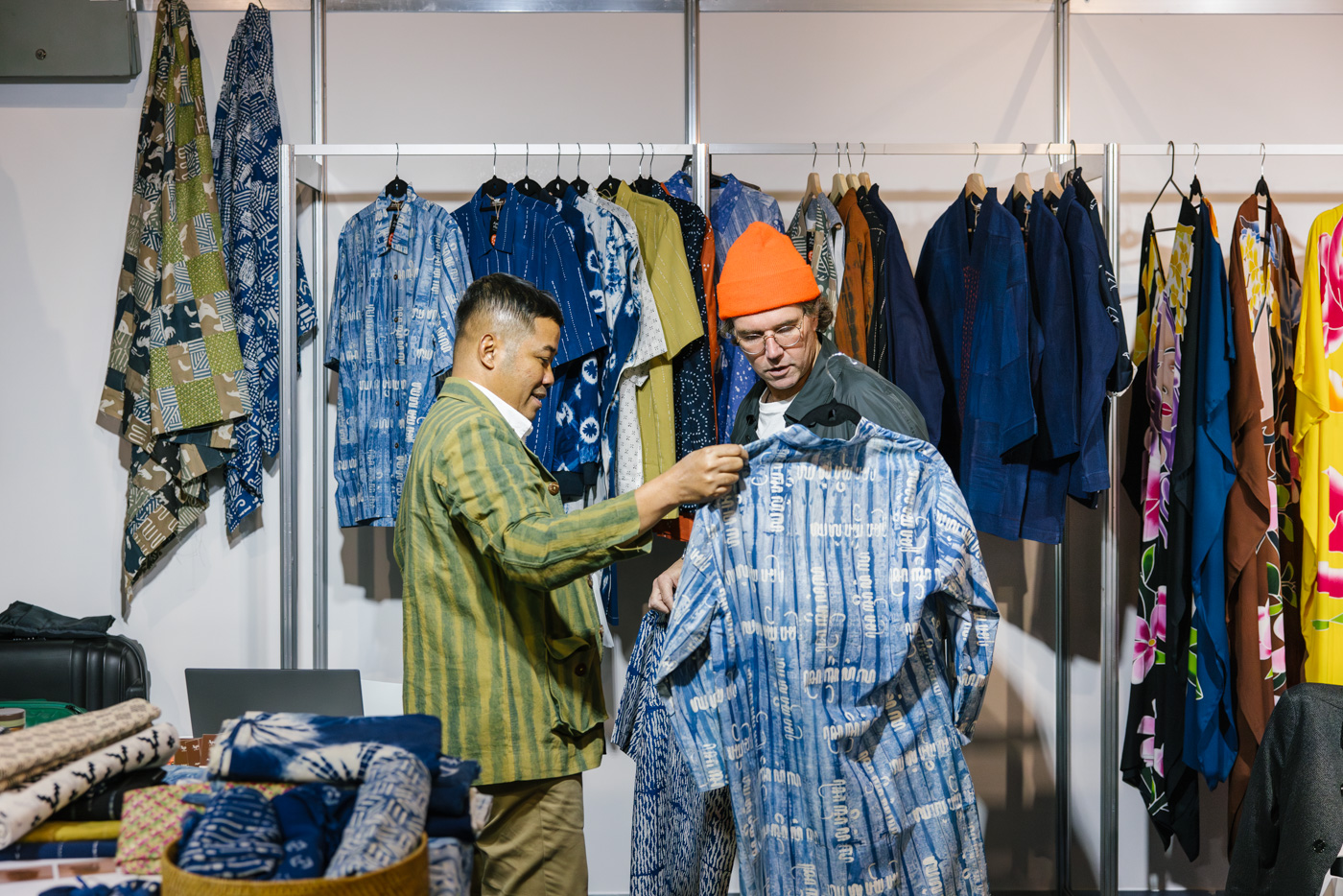
Australia's demand for sustainable fashion is reaching new heights, driven by increasing consumer awareness and a rising wave of conscious shoppers seeking brands committed to ethical production and circular fashion practices. With the local slow fashion market currently valued at $1.98 billion and a projected growth rate of 7 per cent by 2028, industry experts believe this is just the beginning of a much larger movement. The Global Sourcing Expo will take place from 17-19 June at ICC Sydney.
A market poised for growth, but underestimated
Julie Holt, Global Exhibitions Director at Global Sourcing Expo, believes the actual size of the green fashion market is significantly underreported. “A large portion of sustainable fashion trade happens through small businesses, local makers, and the growing trend of thrifting and upcycling, which aren’t always captured in official figures,” Holt said. She added that sustainable fashion is no longer seen as a premium add-on but as a defining brand value. “Today, sustainability is a clear differentiator in the market it’s what consumers are actively looking for.”
Anaita Sarkar, Co-Founder and CEO of Hero Packaging and a speaker at the upcoming Global Sourcing Expo, cited new consumer data to reinforce this shift. “A recent PwC survey showed that Australians are willing to spend an average of 9.7 per cent more on products that are sustainably produced or sourced,” Sarkar said. “Even during periods of economic uncertainty, we’re seeing people gravitate towards brands that align with their values.” Holt cautioned, however, that sustainable fashion will only thrive if it becomes more attainable. “To move beyond current projections, sustainable choices must be affordable and accessible. Competing with fast fashion remains a major challenge for ethical brands,” she added.
Digital Product Passports set to shape the future
As the industry moves towards greater transparency, Holt points to Digital Product Passports (DPPs) as a critical accountability tool. “There’s increasing pressure on ethical brands to lead in transparency, education, and accessibility, and DPPs are a powerful way to support this,” she said. Although Australia has yet to announce an official launch date, she confirmed that Europe is targeting implementation by 2030. “Many Australian brands are already auditing their supply chains from the first thread to the final package in preparation.”
Holt explained that DPPs, typically accessed via a QR code, allow consumers to trace a garment’s origin, composition, and full lifecycle. “This technology is essential for supporting circular economy goals. It ensures product data is accessible, accurate, and comprehensive,” she said. “But the traceability process itself is complex, and we need to foster more industry-wide dialogue around how to manage and implement it effectively.”
Packaging innovation adds value and trust
Packaging has emerged as another major area where sustainability and brand identity intersect. Sarkar shared insights from Trivium Packaging’s Buying Green Report. “The report found that 82 per cent of consumers across all age groups are willing to pay more for products with sustainable packaging. That’s a significant shift from previous years,” she said. Robert Lockyer, Founder and Chief Client Officer at Delta Global and also a speaker at the Expo, believes Australian brands are well-positioned to lead globally. “There’s a real opportunity for Australia to showcase that luxury and sustainability can go hand in hand,” Lockyer said. “However, limited access to sustainable materials, rising costs, and supply chain complexity remain major hurdles.”
He stressed that sustainable packaging must be beautiful, reusable or recyclable, and ethically sourced. “Smart packaging builds trust, creates a competitive edge, and reinforces long-term brand equity,” Lockyer said. “Mono-material packaging, in particular, simplifies the recycling process without sacrificing quality or design.” He added that digital tools like QR codes can guide consumers in how to reuse or recycle packaging and improve traceability and return processes.
Strategies for sustainable brand growth
For brands looking to grow under a sustainable banner, Sarkar offered three strategic tips. “First, use social listening monitor reviews and comments on social media like a live focus group to guide real-time decisions,” she said. “Second, make every product launch an opportunity to innovate improve materials, logistics and reduce waste. Third, partner with artists, charities, and other values-aligned organisations to expand your impact and stay culturally relevant.”
Looking ahead, Holt is optimistic about the sector’s potential. “This is the perfect moment to capitalise on growing demand for sustainability,” she said. “But brands must invest in building transparent and resilient supply chains. At the Global Sourcing Expo, we bring manufacturers and brands together to collaborate, innovate and build the trust needed for long-term growth.”
Moda x Pure, following a successful debut at Spring Fair, returns as a key fashion destination at Autumn Fair 2025, taking place from 7-10 September at NEC Birmingham. Uniting Womenswear, Clothing & Footwear, Fashion Accessories, and Jewellery & Watch, the event is fast becoming a must-visit for fashion retailers and buyers.
The Autumn edition will build on the energy of its first outing, offering a curated mix of new and returning brands including Lighthouse, Nomads, Nina Murati, Miss Sparrow, Gold Trip, and more. Attendees can expect fresh collections, trend insights, and dynamic sessions designed to prepare retailers for the crucial festive season.
Highlights include Lighthouse’s exclusive SS26 outerwear preview and Nomads ethically crafted range embracing sustainable fashion. Nina Murati will present Italian-inspired styles in natural fibres, joined by boutique brands like Decollage, Luella, Girl In Mind, and Goose Island.
In Accessories, Miss Sparrow brings playful socks and cozy scarves, while Long & Son returns with an expansive range of handbags and clutches. Other featured brands include Powder, Glen Appin of Scotland, Primehide, and Goodlookers.
Jewellery & Watch welcomes Gold Trip’s debut lifestyle accessories alongside its demi-fine jewellery, crafted for the gifting market. Lucy Kemp Jewellery will showcase handcrafted sterling silver pieces, complemented by collections from Bill Skinner, Ayala Bar, Suzie Blue, and others.
The event’s Retail Corner will offer a vibrant space for independent retailers to network, attend workshops, and explore merchandising strategies.
“Moda x Pure is now firmly placed on the UK fashion trade calendar,” said Soraya Gadelrab, Autumn Fair Event Director.
Autumn Fair 2025 will host over 800 brands and 12,000+ buyers, making it the UK’s leading B2B retail trade show for Home, Gift & Fashion.

Fast fashion major Shein has announced a major milestone in its sustainability journey, with its climate targets officially validated by the Science Based Targets initiative (SBTi). This validation, backed by prominent organizations such as CDP, the UN Global Compact, World Resources Institute, and WWF, signifies that Shein’s goals align with the global scientific consensus for limiting global warming to 1.5°C. However, the news has been met with considerable scepticism from regulators, environmental campaigners, and experts who question the feasibility of such targets within Shein’s ultra-fast fashion business model.
Shein’s validated commitments include:
• Net-zero greenhouse gas emissions by 2050 across its entire value chain.
• A 42 per cent reduction in Scope 1 and 2 emissions by 2030. (Scope 1 refers to direct emissions from Shien-owned operations, while Scope 2 covers indirect emissions from purchased energy).
• A 25 per cent reduction in Scope 3 emissions by 2030. (Scope 3, which includes suppliers, materials, and shipping, accounts for approximately 96 per cent of Shein’s total carbon footprint).
• Achieving 100 per cent renewable electricity in operations by 2030.
Shein has outlined a roadmap to achieve these targets:
• Increasing the use of recycled materials.
• Support suppliers in their transition to renewable energy.
• Streamline logistics to minimize transportation-related emissions.
• Expand its resale platform, Shein Exchange.
As Mustan Lalani, Global Head, Sustainability at Shein explains, "SBTi's validation of our net-zero targets marks an important step in Shein’s decarbonization journey. We are committed to reducing emissions across our value chain and recognize that addressing Scope 3 emissions is a complex but critical part of that effort."
Critics sceptical about validations
Despite the SBTi validation, critics are raising serious concerns, arguing that Shein’s fundamental business model of rapid production and mass consumption is inherently at odds with genuine sustainability. As Ken Pucker, Professor, Practice, The Fletcher School at Tufts University says, "If Shein delivers on its plan to grow approximately 25 per cent over the near term that would mean that carbon intensity per unit would have to fall by 85 per cent to achieve their target." adding, "I am dubious." Pucker further highlighted that "In fairness to Shein, no fashion company currently pays society for its negative externalities—carbon, chemicals, water, or unfair labor practices."
This sentiment is echoed by various organizations and observers who continue to flag a range of on-going issues associated with Shein.
• Allegations of child labor and excessive working hours: There have been consistent reports about labor practices within Shein’s supply chain, including allegations of child labor and factory workers enduring excessively long hours, far exceeding legal limits in many countries.
• Greenwashing and deceptive discounting practices: Critics accuse Shein of greenwashing – making misleading or exaggerated claims about its environmental initiatives while its core business model promotes overconsumption. The Irish Competition and Consumer Protection Commission (CCPC), alongside other EU partners, recently ordered Shein to rectify platform practices that may breach EU law, including potentially deceptive sustainability claims. Greenpeace, in 2022, accused Shein of "taking greenwashing to a new low" over a pledge to donate to an NGO focused on textile waste, while simultaneously continuing to produce what critics label as "disposable" clothing at an unprecedented scale.
• Heavy reliance on polyester and fossil fuels: A significant portion of Shein’s products are made from synthetic fabrics like polyester, which are derived from fossil fuels. These materials contribute to microplastic pollution and have a much longer decomposition time than natural fibers, exacerbating textile waste.
• Legal disputes over copyright infringement: Shein faced numerous legal battles concerning intellectual property theft and copyright infringement, further clouding its ethical standing.
Why the concern
Shein’s growth so far shows a formidable challenge to its decarbonization efforts. Reports suggest in 2023, Shein’s total emissions grew 81 per cent, outpacing its 43 per cent revenue growth in the same period. This highlights the inherent difficulty of decoupling emissions from growth within its current model. In 2023, Shein’s Scope 3 emission, which it aims to reduce by 25 per cent by 2030, was over 16.5 million tonnes of CO2 equivalent. A 25 per cent reduction would mean a cut of over 4 million tonnes. The company releases an estimated 2,000 to 10,000 new items daily, contributing to a culture of disposability. The fashion industry, as a whole, is responsible for approximately 10 per cent of global carbon emissions, with fast fashion being a significant driver.
Table: Shein’s emissions growth vs. revenue growth (2022-2023)
|
Emission Scope |
2022 Emissions (CO2e) |
2023 Emissions (CO2e) |
Percentage Change |
|
Scope 1 |
Not Specified |
Nearly Doubled |
Significant Increase |
|
Scope 2 |
Not Specified |
Increased by 32% |
Moderate Increase |
|
Scope 3 |
Not Specified |
Increased by 12% |
Moderate Increase |
|
Total Emissions |
6.04 million tonnes |
9.17 million tonnes |
81% Increase |
(Source: SHEIN's 2023 Sustainability and Social Impact Report, as cited by various media outlets like Sustainability Magazine and Supply Chain Digital.)
Transparency and transformation
While SBTi approval is symbolic step towards climate alignment for Shein, the overwhelming consensus among critics is that meaningful change in the fast fashion industry, particularly for a company of Shein's scale and business model, will require far more than targets. It demands full transparency, a radical transformation of its production and consumption model, and a genuine commitment to addressing the systemic environmental and social harms associated with ultra-fast fashion.
As Liv Simpliciano, Policy and Research Manager at Fashion Revolution opines, "Targets are only as meaningful as the action that follows. The fashion industry remains far off track from delivering the rapid, large-scale emissions cuts that climate science makes unequivocally clear are needed." The challenge for Shein now lies in proving that its validated targets are not merely a PR exercise, but a genuine commitment to a more sustainable future.
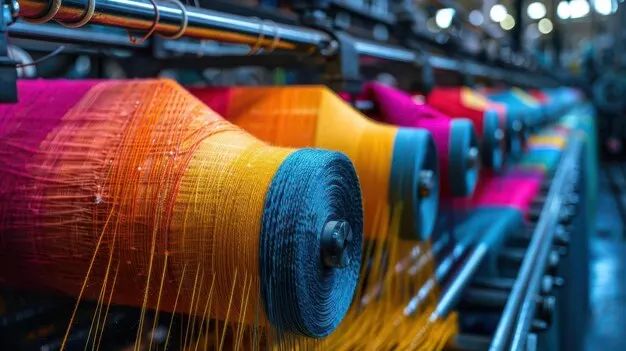
The global apparel industry has entered the second quarter of 2025 with renewed momentum, marked by strong import demand, shifting export patterns, and evolving retail dynamics. Data from Wazir Advisors ‘Apparel trade scenario in key global markets and India’, reflects the trade and retail landscape in March and April 2025, and provides valuable insight into the changing contours of this consumer-driven sector.
Developed markets drive import growth
Apparel imports grew across developed markets in March 2025, underscoring a recovery in consumer demand and a broader stabilization of global supply chains. The US imported apparel worth $6.6 billion, registering a 12 per cent year-on-year (YoY) increase. The European Union led the charts with imports worth $8.7 billion, a 23 per cent jump YoY, highlighting strong retail restocking activity. The UK, too, saw an impressive 36 per cent YoY rise, with imports valued at $1.9 billion. Japan followed closely with a 29 per cent YoY growth, importing $2.2 billion worth of apparel.
These figures point to rising consumer confidence in these regions and reflect the industry’s preparation for upcoming seasons. The strong numbers also indicate a renewed reliance on global sourcing networks after pandemic-era supply disruptions and a rebound in brick-and-mortar retail activity.
Export patterns reflect regional shifts in competitiveness
While importers reported strong demand, the export scenario revealed diverging performances among the leading apparel manufacturing countries. China, still the largest global exporter, reported a marginal 1 per cent decline in April 2025, with total exports standing at $11.2 billion. This slight downturn reflects ongoing pressures, including increasing labor costs, trade tensions, and global buyers’ continued efforts to reduce dependence on a single country.
In contrast, South Asian and Southeast Asian countries fared better. India emerged as a strong performer with a 17 per cent YoY rise in apparel exports, totaling $1.4 billion. This increase reflects India’s growing competitiveness driven by policy support, favorable exchange rates, and increased buyer interest in sustainable sourcing. Vietnam continued its upward movement as well, with exports rising 15 per cent YoY to $3.1 billion. Meanwhile, Bangladesh maintained its performance with stable exports of $2.4 billion, showing resilience amid shifting market dynamics.
These trends underscore the gradual diversification of global sourcing patterns. Retailers are increasingly hedging risks by distributing their orders across multiple countries to ensure supply chain resilience, cost efficiency, and quicker turnaround times.
Retail growth returns, but online sales weaken
Retail performance in April 2025 reflects a positive sentiment in the apparel sector, particularly in physical retail channels. In the US, apparel store sales increased 6 per cent YoY, suggesting a rebound in in-person shopping experiences. Interestingly, however, the country’s online apparel sales witnessed a 6 per cent decline in Q1 2025 compared to the same quarter last year. This could point to a normalization of consumer behavior post-pandemic, as shoppers return to physical stores, seeking tactile engagement and immediate gratification.
The UK also posted a healthy 9 per cent YoY growth in apparel store sales in April 2025, reaching £3.6 billion. This suggests continued resilience in consumer spending despite broader macroeconomic uncertainties. In India, apparel retail sales in March 2025 rose by 6 per cent YoY, highlighting the country’s growing domestic consumption and urban retail expansion.
In contrast, the US home furnishings segment showed a 1 per cent decline in store sales, indicating a shift in discretionary spending priorities, possibly favoring fashion and lifestyle purchases over home improvement categories.
Macroeconomic indicators reflect mixed signals
April 2025’s macroeconomic indicators present a mixed backdrop for the apparel industry, particularly in the US. While inflation eased to 2.3 per cent, offering some relief to consumers and retailers alike, consumer confidence index dropped sharply to 86.0 from 92.9 in the previous month. This drop suggests rising consumer caution, possibly linked to broader economic concerns such as employment uncertainty, geopolitical risks, or slowing wage growth.
The decline in consumer confidence could temper future retail performance despite current positive trends in store sales. Retailers may need to adopt a more conservative approach to inventory planning and promotional strategies to navigate potential volatility in demand.
Resilience with caution in future
The data from early 2025 shows highlights an industry in recovery, yet one that remains sensitive to macroeconomic and geopolitical factors. Strong import demand from developed markets and encouraging export performances by countries like India and Vietnam point to sustained momentum. At the same time, the drop in US consumer confidence and declining online sales indicate that the path forward may not be entirely smooth.
The global apparel industry must now balance optimism with prudence. Retailers and suppliers alike will need to remain agile, focus on cost control, invest in digital transformation, and strengthen their sustainability credentials to remain competitive in an increasingly fragmented and dynamic global market.


